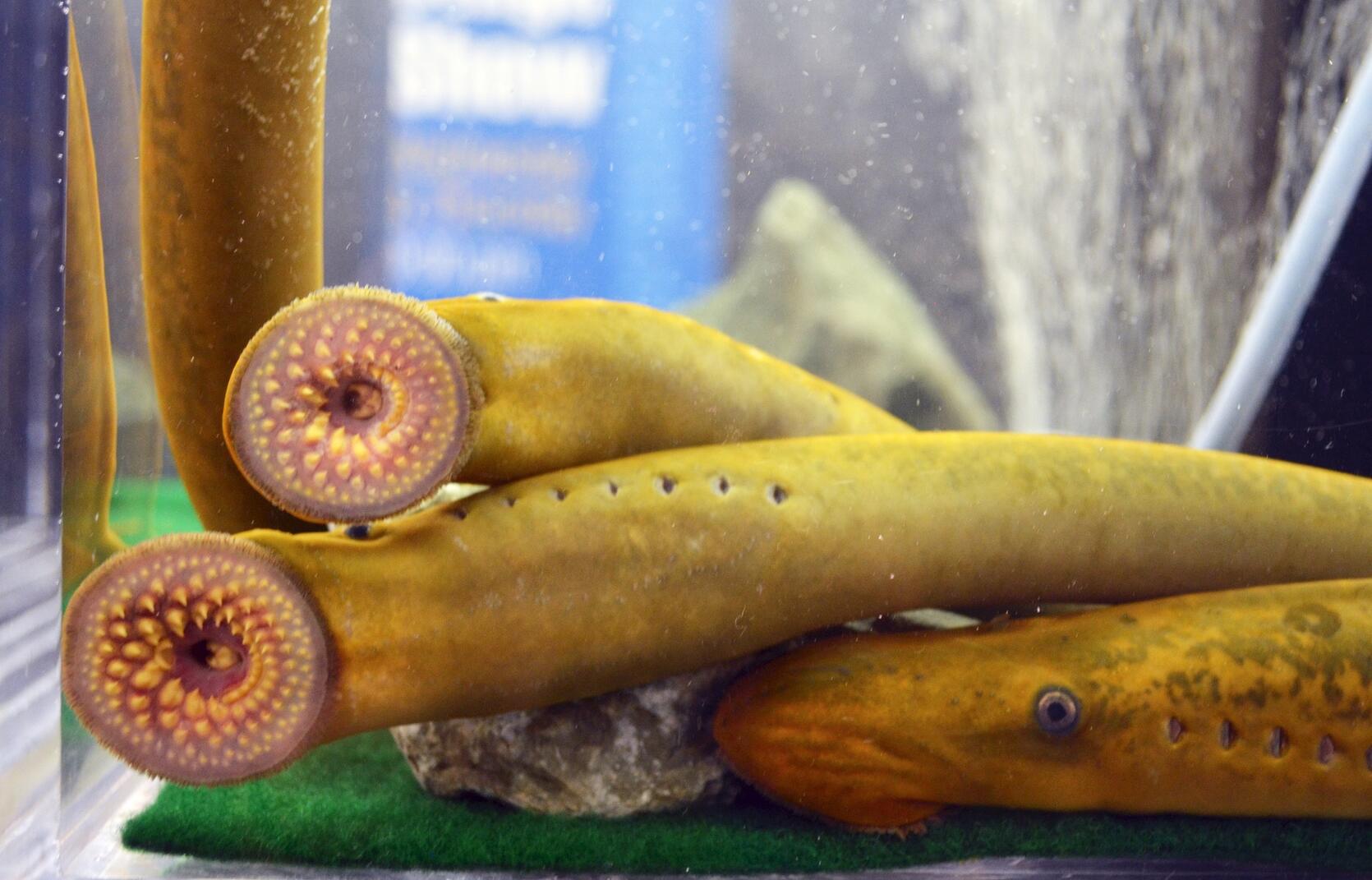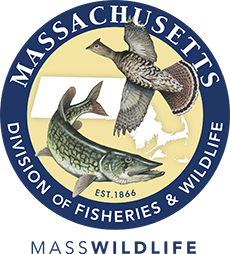- Division of Fisheries and Wildlife
Media Contact
Media Contact, MassWildlife

Sea lampreys are native to Massachusetts and can be found in coastal streams and in the Connecticut and Merrimack Rivers and several of their tributaries. Lampreys are primitive, eel-like fish with a suction-cup like mouth ringed with rows of sharp teeth. Despite their unusual appearance, sea lampreys do not pose a threat to people and provide a variety of benefits to our aquatic ecosystems.
Life as a lamprey
Sea lampreys are anadromous fish, which means they are born in fresh water and spend their adult years in the ocean before returning to freshwater to spawn. Lampreys hatch from eggs and spend their first 4 years in rivers and streams feeding only on drifting plankton. In their fifth year, they migrate to the ocean and start the parasitic phase of their lifecycle. While in the ocean, adult sea lampreys feed on ocean fish by attaching to a host and feeding on its blood and body fluids. After 1–2 years in the ocean, adults detach from their host and make their way back to rivers and streams to spawn.
Adult sea lampreys can be seen in the Connecticut and Merrimack Rivers and some of their tributaries during May and June. Lampreys are not invasive or a threat to other fish or animals—including humans—swimming in the water. Adults save all their energy for spawning and do not feed while they are in freshwater. After spawning, which takes place primarily in June, the adult lampreys die.
Both bloodsucking and beneficial
The migratory life cycle and nesting behavior of sea lampreys provide many benefits to freshwater river ecosystems.
- When adult lampreys die after spawning, nutrients from their bodies are recycled and become available to other plants and animals in freshwater systems.
- Lamprey construct nests of stones on the riverbed. This nest construction restores and enhances streambed structure. Abandoned lamprey nests are also used by riverine fishes such as shiners, fallfish, and salmonids.
- After lamprey hatch, they drift downstream and burrow into sandy areas. Lamprey eggs and larvae are food for a variety of fish, birds, and mammals.
Threats
Like other anadromous fish, sea lamprey populations have been reduced or eliminated in some areas by dams and pollution. As an example of their decline, records of sea lamprey passage at the Holyoke Dam on the Connecticut River show that current abundance is roughly 50% of historic numbers. While fish passage facilities at dams on the Connecticut River have restored access to portions of the lamprey’s historical range, barriers on tributaries still prohibit them from reaching a great deal of suitable spawning habitat.
How you can help
Anglers and others recreating on the river can protect sea lamprey populations by simply letting them be as they go about their spawning behavior. You can also let others know that lampreys found in rivers are not a threat to native fish or to people.
